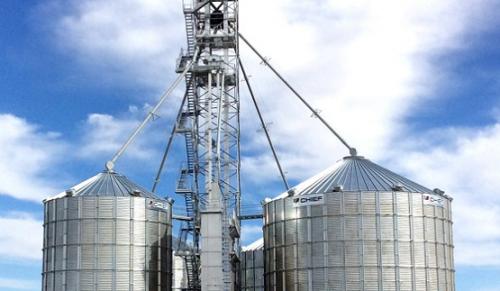Maximizing Harvest Efficiency with Proper Grain Bin Planning

Introduction:
Efficient grain storage is a cornerstone of successful agricultural
operations, and proper grain bin planning plays a pivotal role in ensuring the
seamless transition from harvest to storage. This article explores the
importance of grain bin planning in maximizing harvest efficiency, detailing
key considerations and strategies that farmers can employ for optimal results.
1.
Determining Storage Capacity: One of
the primary aspects of effective grain bin
planning is accurately assessing the required storage capacity. This involves
estimating the volume of the harvested crop and factoring in potential yield
variations. Properly gauging storage needs prevents overfilling or
underutilization of bins, optimizing space and resources.
2.
Considering Future Expansion:
Forward-thinking farmers should factor in potential future expansion when
planning grain bins. Agricultural operations may evolve, and anticipating
increased yield or the addition of new crops ensures that storage
infrastructure remains adaptable to changing needs. This proactive approach
minimizes the need for frequent modifications or additional construction.
3.
Optimal Bin Placement:
Strategic placement of grain bins is crucial for efficient operations during
harvest. Bins should be located to minimize transportation distances and
streamline the unloading process. Accessibility for harvesting equipment,
trucks, and other machinery should be considered to facilitate a smooth flow of
activities during peak harvest times.
4.
Implementing a Comprehensive Aeration System:
Aeration is a key component of grain bin planning that directly impacts the
quality of stored grains. Implementing a comprehensive aeration system helps
control temperature and moisture levels within the bins, preventing hot spots
and preserving grain quality. Proper airflow reduces the risk of mold growth
and mycotoxin development.
5.
Utilizing Technology for Monitoring:
Incorporating technology into grain bin planning enhances monitoring
capabilities. Automated sensors and monitoring systems provide real-time data
on temperature, humidity, and other environmental factors. This technology
enables timely intervention, allowing farmers to address issues such as
spoilage or pest infestations promptly.
6.
Selecting Appropriate Bin Types: The
type of grain bin chosen has a significant impact on both storage efficiency
and long-term durability. Consider factors such as material, insulation, and
bin design. Some bins are better suited for specific crops or climates, and
selecting the appropriate type ensures optimal conditions for grain
preservation.
7.
Implementing Safety Measures: Safety
considerations should be integrated into grain bin planning to protect both
workers and stored grains. This includes proper equipment for grain handling,
ventilation systems to prevent hazardous conditions, and safety protocols for
personnel entering or working near the bins.
8.
Establishing an Efficient Unloading System:
Planning for an efficient unloading system is crucial for a smooth transition
from storage to market. This involves selecting the right unloading equipment,
optimizing transport routes, and ensuring that the unloading process aligns
with overall harvest logistics.
9.
Budgeting for Maintenance:
Including maintenance considerations in grain bin planning is essential for
prolonging the lifespan of the storage infrastructure. Budgeting for regular
inspections, repairs, and upgrades ensures that bins remain in optimal
condition, preventing unexpected breakdowns and minimizing downtime.
Proper grain bin planning is the linchpin of maximizing harvest
efficiency in agriculture. From accurately assessing storage needs to
implementing advanced monitoring technologies and ensuring safety, a
comprehensive approach to grain bin planning sets the stage for a successful
harvest-to-storage transition. By incorporating these considerations into their
planning process, farmers can optimize efficiency, preserve grain quality, and
lay the groundwork for sustainable and productive agricultural operations.
Post Your Ad Here
Comments